Tom’s Corner
Tips, techniques and commentary from Master Model Railroader Tom Piccirillo
Some people say, “It’s all in the details.” This is certainly true for award-winning scale models. Models are submitted for judging at contests, and much of the “score” needed to win an award is derived by the clean installation and proper placement of details.
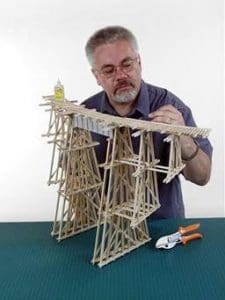 For example, full size piers are supported on pilings driven into a river bed. They are braced by wood beams that are bolted to them; however, many small-scale models are constructed by gluing the braces to the pilings. Any judge “in the know” (most of them) will notice the lack of bolt details and will penalize the model’s score.
For example, full size piers are supported on pilings driven into a river bed. They are braced by wood beams that are bolted to them; however, many small-scale models are constructed by gluing the braces to the pilings. Any judge “in the know” (most of them) will notice the lack of bolt details and will penalize the model’s score.
Scale-size molded-plastic bolts are commercially available, but are too tiny to handle with bare fingers. These tiny bolts need to be glued into tiny drilled holes, and usually at locations that cannot be reached with standard needle nose pliers. I found the best tool to use here is the Xuron #450BN Bent Nose Pliers.
The bent nose of these pliers holds the bolt at the perfect angle for dipping into a spot of glue and for inserting its shank into the pre-drilled hole. The handle angles away from the framework of the pier and avoids snagging the bracing.
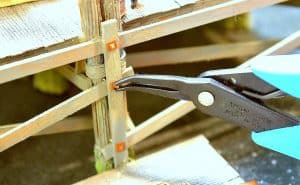
These pliers make it easy to place all kinds of details, like railings, hand wheels, roof details, locomotive parts, scale-size lights . . . even figures.
Here’s a pigeon figure being placed on the chimney of a model building. The bent nose of the plier easily holds the figure at the correct angle for precise placement.
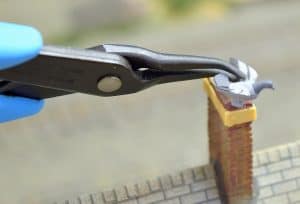
Top-scoring models show no signs of glue used in assembly. Unsightly blobs of glue ruin the realistic appearance of scale models, and judges keep this in mind when determining a model’s score. So, it’s important that the location of glue is not only precise, but also held to a minimum. That’s where the Xuron #860 Dispensing Bottle is needed . . . it lets you apply just the right amount of glue exactly where you need it. Just fill the bottle (2 oz, 56.69 grams) with your favorite glue (works best with white wood-working glues) and squeeze to apply. Includes 3 nozzles . . . extra fine, fine, and medium for precise applications . . . plus a spout for large areas.
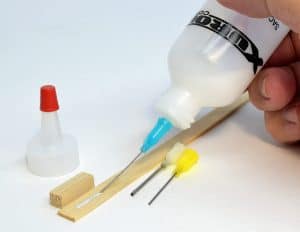
Have questions for Tom or want share your experience detailing a model railroad or diorama? Simply comment on this post and we’ll be pleased to start a conversation!

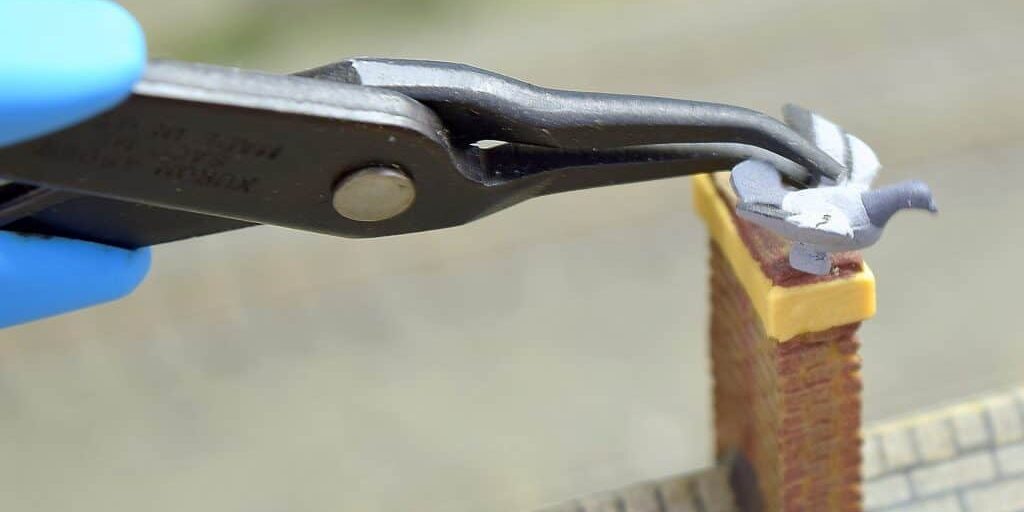
Very informative article. I especially enjoyed the story about the employment or the BN 450. The import of glue, the amount reqited and application was a great reminder. You applicators seem to be the answer. Please kee up the good work and I will look for Xuron at.next MR SHOW. Robie MacDonald
Thank you, Robie. We appreciate your comments!
Are the glue bottles solvent-proof? I’ve been using a very thin (.008) needle A-West bottle to apply MEK, but I’ve noticed that over the years the solvent eventually damages the bottle.
Hello Dave,
This is a good question. I will check into the MEK to be sure it’s not going to damage the bottles — I’ll be back to you with an answer.
thank you!
Hello Dave,
We did some research and found that MEK does not react well with LDPE (low density polyethylene), which is the type of material the bottles are made from. We don’t recommend dispensing MEK in our bottles. Thank you for checking with us!